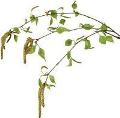Use of material is possible with active link
© 2015 - 2023. Hunting, Fishing - Information Portal Support the project, donate
Water-repellent fabric.How to make?
How to make the fabric waterproof? -"Such a question addressed to the editor of gorkovchanin P. A. Blinov, and many other readers of the magazine.
In No. 6 of the journal for 1957 are given a way to make the fabric waterproof, but it is ineffective - the fabric soon begins to pass water.
I got acquainted with the water repellent technology adopted in the industry, chose one of the simplest methods of processing matter and tested it in conditions accessible to most hunters and fishermen. The method is relatively simple and gives very good results. It gives a water-resistant linen cloak-tent fabrics, grey fabric, tarpaulins and cotton fabrics, giving them at the same time water-repellent and antifouling durability.
The essence of the method of giving the fabric water-repellent properties is to apply a film of aluminum soap on the fabric fibers, which makes the fabric wettable. To do this, the fabric is processed in two solutions.
A solution of I. 15 g of good Laundry soap to scold and dissolve in a liter of boiling water. The working temperature of the solution is 90-100°.
Solution II. Separately prepare the solutions:
a) aluminum sulfate 120 g per 1 liter of hot water (50°). Aluminum sulfate can be replaced by aluminum alum alum at the rate of 190 g per 1 liter of water:
b) lead oxide 215 g per 1 liter of water.
On cooling equal volumes of solutions merge together, mix well and allow to settle down. Carefully drain the clear liquid without affecting the sediment. The working solution is used without heating.
Processing of fabric and giving it water-repellent properties. A clean cloth soaked in working solution I for 20 to 30 MIM., maintaining the desired temperature. Contaminated fabric must withstand I—2 hours in a hot soap-soda solution (1 kg of fabric 50 g soap and 30 g of sodium) and then rinse very well.
After this tissue is removed, to let the liquid drain out and dry your fabric so that it remains slightly damp.
Dried fabric immerse in solution II, stand there for 10-15 minutes., remove, allow to drain the solution into the bath and hang to dry. The dried fabric is ironed with a hot iron.
Subjected to the specified processing of the fabric useful to proportionality. For this you need to prepare a solution of paraffin (or wax) in petrol (100 g per liter) and this solution using a broad brush to lightly coat the surface of the fabric. Then let the gasoline evaporate and iron the fabric with a hot iron.
When working with gasoline, you need to be particularly careful, since gasoline is flammable, and its vapors are poisonous. Therefore, it is better to work on open hearth, not indoors. Leaded gasoline for this purpose can not be used.
V.ZOTOV, Kiev. Hunting and hunting economy, 1958, 5


